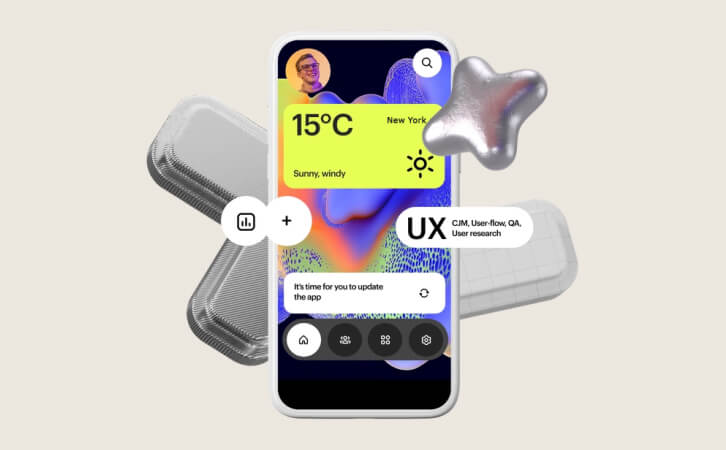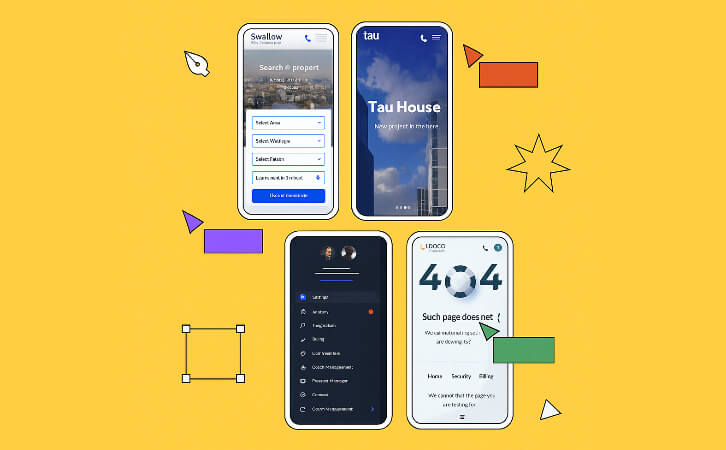UX/UI designers create convenient, intuitive, and visually appealing interfaces for websites and applications. They study user behavior, develop layouts, test prototypes, and ensure that digital products are not only beautiful but also easy to use. If you’re interested in digital products and want to work in a creative field, UX/UI design might be the perfect choice. In this article, you’ll learn what skills you need to get started and how to master this profession.
Why Learn UX/UI Design?
A UX/UI designer is someone who makes digital products comfortable, beautiful, and intuitive. Every app, website, or service you use has a team of designers behind it who are thinking about your experience. That’s why this profession is not only important but also well-paid.
The demand for UX/UI designers grows every year. Companies realize that the success of their business depends on the usability of their interfaces. Plus, you can work remotely, choose your projects freely, and even enter the international market.
Where to Start?
When you first dive into UX/UI design, everything might seem complicated — new software, principles, trends… But don’t worry! The key is to have a clear action plan and practice regularly. Here’s how to begin:
- Understand the Basics. UX (User Experience) is about usability, while UI (User Interface) focuses on visual design. It’s important to grasp the difference and understand the core principles.
- Master the Tools. Designers work in Figma, Sketch, or Adobe XD — these are the main programs you need to learn.
- Analyze Successful Projects. UX/UI isn’t just about aesthetics — it’s also about logical user interaction. Study how popular interfaces are designed.
- Create a Portfolio. Even student projects can help attract your first clients or land your first job.
- Keep Learning. Design is a dynamic field where it’s crucial to update your knowledge and practice constantly.
To learn faster and gain practical skills, consider taking a structured course. For example, the «UI / UX Design Specialization» course from Coursera helps you understand UX/UI design, master the tools, and build a strong portfolio to kickstart your career.

What Makes the Coursera Course So Valuable?
Not all UX/UI design courses provide real skills needed for the job. Coursera stands out with several key advantages:
- Step-by-step mastery of the full UX/UI design process. The course covers every stage of creating user interfaces and experiences — from user research and project strategy to information architecture, wireframes, and visual mockups.
- Hands-on assignments and projects. Throughout the specialization, you’ll complete exercises and real-world projects, including building prototypes and a comprehensive website plan. These help you apply your knowledge and build a professional portfolio.
- Flexible learning format. The course is fully online and self-paced, allowing you to learn on your schedule — ideal for balancing studies with work or other commitments.
What Awaits You After the Course
Once you complete the course, you won’t be left empty-handed. You’ll have a ready-made portfolio, knowledge of in-demand tools, and an understanding of UX/UI design principles. This opens up several career paths:
- Working in a Company. Join a product or IT company where UX/UI designers create user-friendly interfaces for apps and websites.
- Freelancing. If you want more freedom, you can work independently, take on gigs through freelance platforms, and build your client base over time.
- Startups and Personal Projects. With design skills, you can develop your own digital products or contribute to startups.
The most important thing is to keep learning and practicing. Success in this profession won’t take long to follow!
Conclusion
UX/UI design isn’t just a job — it’s an opportunity to create, influence the world of digital products, and earn a good income. You can start right now, and the «UI / UX Design Specialization» course from Coursera is the perfect starting point. If you dream of working in this field, don’t delay! In just a few months, you’ll be able to proudly call yourself a UX/UI designer.
Ready to start? Then let’s go — toward your new profession!


